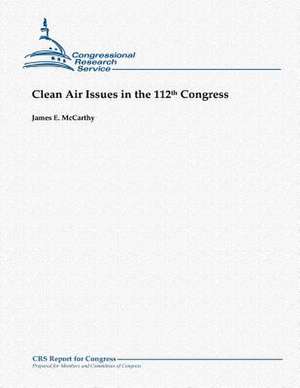Clean Air Issues in the 112th Congress
Autor James E. McCarthyen Limba Engleză Paperback
Preț: 93.60 lei
Nou
Puncte Express: 140
Preț estimativ în valută:
17.91€ • 18.66$ • 14.83£
17.91€ • 18.66$ • 14.83£
Carte disponibilă
Livrare economică 13-27 martie
Preluare comenzi: 021 569.72.76
Specificații
ISBN-13: 9781481070775
ISBN-10: 1481070770
Pagini: 34
Dimensiuni: 216 x 280 x 2 mm
Greutate: 0.1 kg
Editura: CREATESPACE
ISBN-10: 1481070770
Pagini: 34
Dimensiuni: 216 x 280 x 2 mm
Greutate: 0.1 kg
Editura: CREATESPACE
